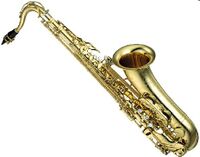Saxophone: Difference between revisions
No edit summary |
No edit summary |
||
| Line 23: | Line 23: | ||
[[File:mary had a litte lamb - saxophone.jpg|Mary had a litte lamb - saxophone]] | [[File:mary had a litte lamb - saxophone.jpg|Mary had a litte lamb - saxophone]] | ||
{{NavInstruments}} | |||
[[nl:Saxofoon]] | [[nl:Saxofoon]] | ||
Latest revision as of 23:50, 12 February 2024
Saxophones come in various types.
Let's take a closer look at the most common types:
- soprano saxophone (in Bb)
- alto saxophone (in Eb)
- bariton saxophone (in Bb)
- tenor saxophone (in Eb)
When you want to play along with non-transposing instruments, something has to happen with your notes...
If you have access to the notes as written in C (as for piano, flute. violin) it's an easy trick:
go to the part modification dialog,. select transposition C to Eb and you're done.
For a soprano or tenor saxophone, more or less same story, only select transposition C to Bb.
Now what if you have a Bb-clarinet part and want to transcribe that for tenor saxophone?
In the part modification dialog,. select transposition Bb to Eb and once more you're done.
The score below shows the original tune for flute (C-instrument) with the alto-saxophone part (Eb-instrument) below


